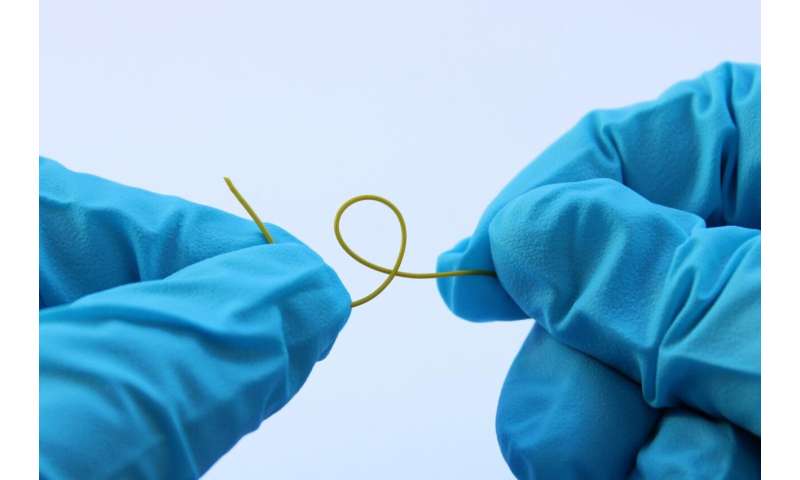Periodontal disease: Patent for new treatment method

New biodegradable rods promise to provide better treatment for periodontal disease. Researchers from the Institute of Pharmacy at Martin Luther University Halle-Wittenberg (MLU) have re-combined an already approved active ingredient and filed for a patent for their invention together with two Fraunhofer Institutes from Halle. The innovation would spare patients from having many side effects. Their findings were published in the International Journal of Pharmaceutics.
Periodontal disease is widespread and usually caused by bacteria, which leads to an inflammation of the gums—the periodontitis. More than 50% of adults in Germany develop periodontal disease in the course of their lives, mostly in old age. According to projections, more than ten million Germans have a severe form of the disease. “The body’s barrier function is badly disrupted by the large wounds, allowing more substances and bacteria to enter the body,” explains Professor Karsten Mäder, head of the Institute of Pharmacy at MLU. The inflammation affects the entire body and is often the cause of other diseases such as heart attacks or pneumonia. Therefore, mechanical cleaning procedures are often followed by antibiotics. These are usually administered in pill form, which puts a strain on the entire body. Common side effects are diarrhoea, abdominal pain and nausea as well as skin reactions such as redness and itching. The possible development of resistance to common antibiotics is also a major factor in this form of treatment.
Ideally, the antibiotic would only act locally in the mouth rather than throughout the entire body. Mäder’s research group has therefore combined a proven antibiotic (minocycline) with an equally proven pharmaceutical excipient (magnesium stearate). “The complex is just as effective, but more stable. It slowly releases the antibiotic on the spot,” explains Mäder. “In addition to the continuous and sustained release of the antibiotic, we needed to find an easy way of administering it.” His research group found a practical solution to this problem by utilising pharma-grade polymers.
The researchers were able to use these chemical substances to produce flexible, biodegradable rods containing the antibiotic. The small rods can be easily inserted into the gingival pocket. Since they are broken down by the body, they do not have to be removed after treatment. “The rods are much more effective in vitro than previous products on the market,” says Martin Kirchberg, who is studying the topic as part of his doctoral thesis. Among other things, Kirchberg has optimised the composition of the polymers in order to achieve exactly the right balance between strength and flexibility and to make them long-lasting. Development is already so advanced that large-scale production would be possible.
Source: Read Full Article


